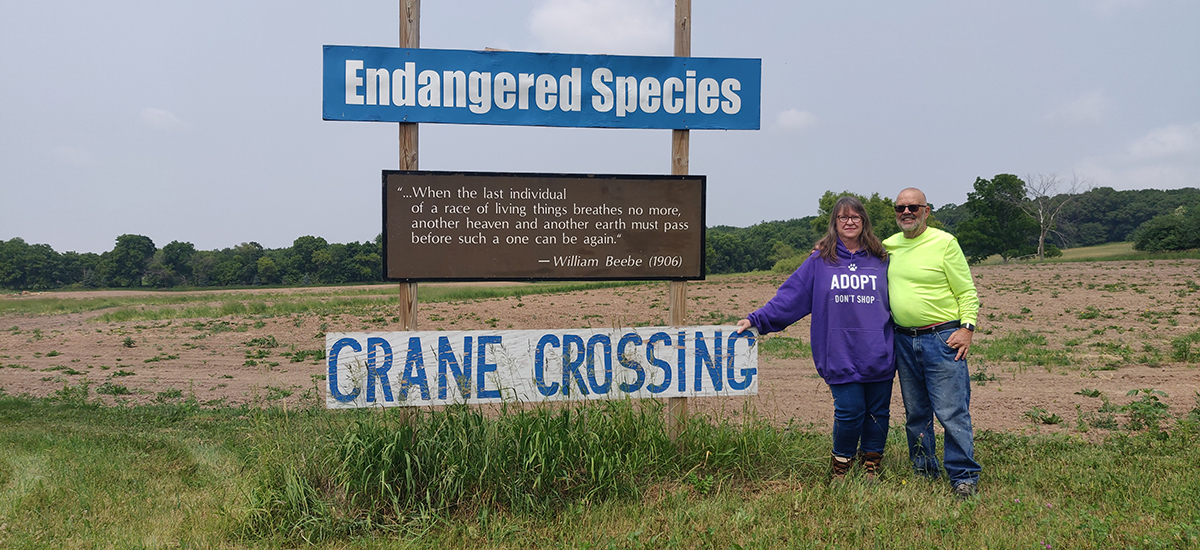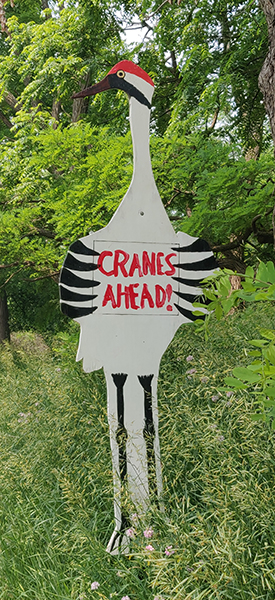
Editor’s note: We are saddened to share that Whooping Cranes 24-17 and 4-17 lost their chick, likely due to predation, shortly after this story was posted. We are saddened by this news but hopeful that the lessons learned from this nesting season will result in a successful season next year for the pair.
Whooping Cranes Spirit (24-17) and Cloud (4-17) claimed a wetland in the agricultural landscape of Sauk County in southcentral Wisconsin as their nesting site for the past three years. Spirit and Cloud were raised in captivity and released into the reintroduced Whooping Crane Eastern Population. After two failed attempts at breeding, this year they successfully hatched a chick in mid-May – read more about the hatch here. As the young crane grew bigger, the family began to wander a larger area surrounding their nest to search for food. To do so, they have to cross a fairly busy county highway. While the chick is still flightless, road traffic is a real hazard.

Dan and Kathy Holzman are farmers whose land is adjacent to the cranes’ nest site. When Spirit and Cloud started to appear frequently at the wetland, even before their first breeding season, Dan and Kathy realized that road traffic could be dangerous for them. So they installed road signs to alert drivers to slow down along the section where the cranes, and many other wildlife, often cross. Those road signs prove to be so important now that Spirit and Cloud frequently walk their baby across the road.
This nesting season, it has been dry for many days. The soil in the Holzman’s fields has become hard, and earthworms are going further down to find moisture and avoid heat, making it difficult for the cranes to find this tasty food. Dan pumped water into his field so that the soil became softer and earthworms would come closer to the surface for the cranes.
Dan and Kathy are true wildlife lovers. The cranes know it and trust them. They often foraged on their fields, even coming close to their backyard and barns. Dan and Kathy also grant International Crane Foundation researchers access to their properties so that we can conduct crane monitoring and habitat studies.
Agricultural lands are important habitat for wildlife, including endangered species such as the Whooping Crane. Farmers like Dan and Kathy Holzman, who care about wildlife and manage their lands in a way that allows wildlife to coexist, are truly conservation heroes.

Story by Tran Triet, Southeast Asia Program Director.
